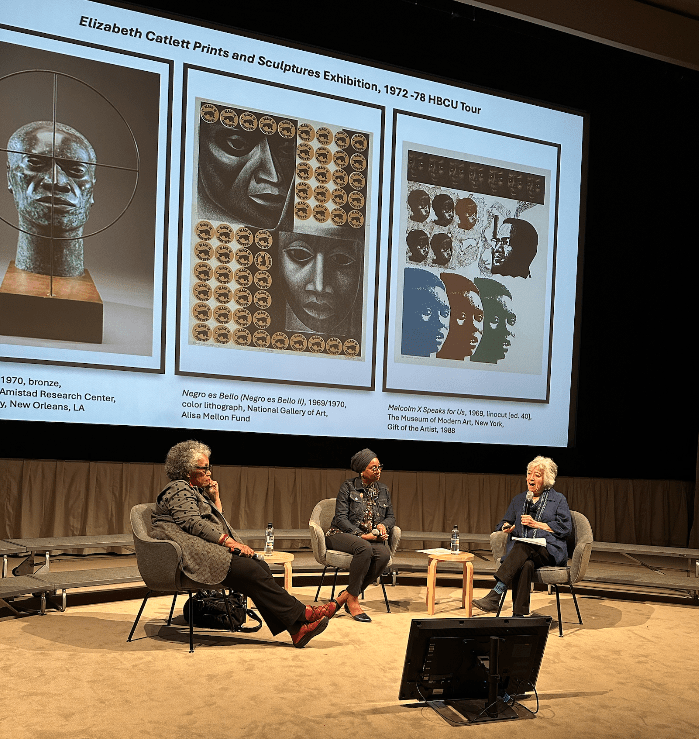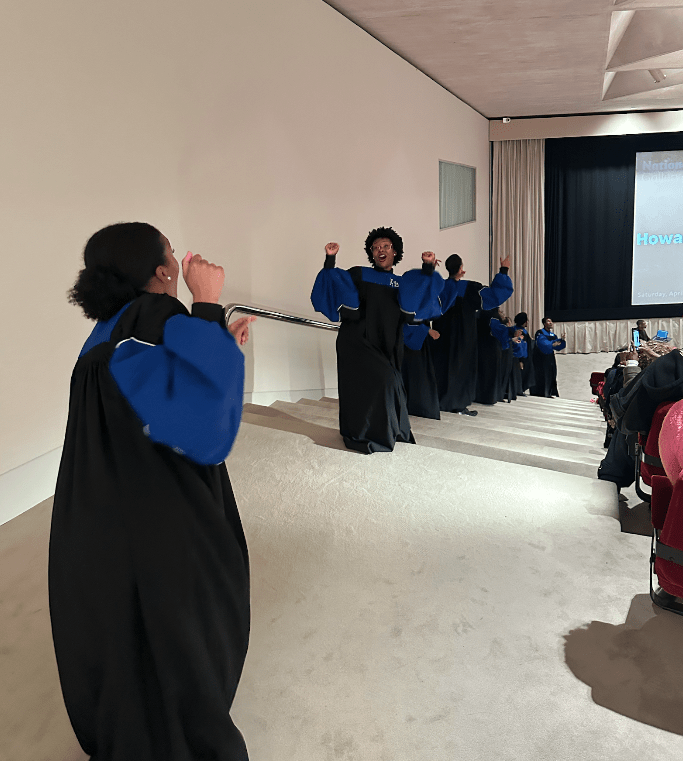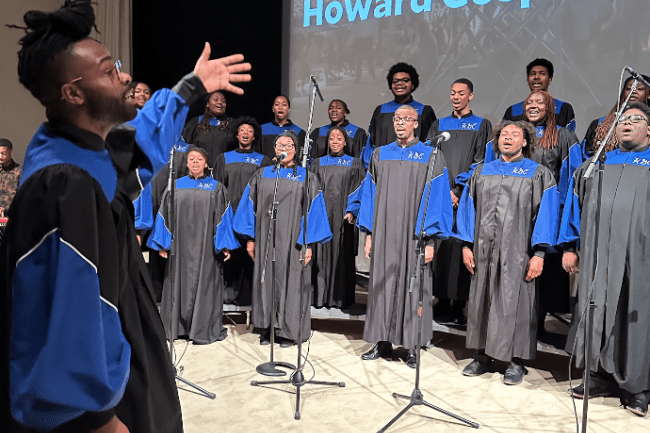This past weekend, Howard University made an unforgettable impression at the Wilmerding Symposium and Community Celebration, hosted at the National Gallery of Art. Despite the ongoing “Hands Off” protest that echoed outside, the energy inside the Gallery was one of celebration, education, and cultural reverence. Hundreds gathered to honor the life and legacy of Elizabeth Catlett, one of Howard’s most distinguished alumnae and a revolutionary artist whose work continues to ignite conversation and action.

The symposium coincided with the Washington, D.C., stop of the traveling exhibition “Elizabeth Catlett: A Black Revolutionary Artist,” a retrospective showcasing more than 150 pieces of Catlett’s work. From bold linocuts to deeply emotive sculptures and rarely seen paintings, the exhibition spanned her nearly 60-year career in both the U.S. and Mexico. For many, this was not just an art event — it was a homecoming.
Howard University artistry played a leading role throughout the day. Whether offering tours, assisting with interactive art-making stations, or speaking on panels, they embodied Catlett’s enduring spirit of activism through art. "It's humbling to see Black women at their finest, it's some things inspires me," said Charles Philippe Jean-Pierre, Hatian-American Artist.

One of the highlights of the day was a panel discussion moderated by Professor Kathryn Coney-Ali, a cultural historian and educator at Howard University’s Chadwick A. Boseman College of Fine Arts. The conversation with historians Lowery Stokes Sims and Dr. Melanie Anne Herzog, a leading scholar on Catlett, traced the influence of her revolutionary legacy on today’s young artists and scholars. “It was very moving experience, celebrating the legacy of one of Howards own,” said Coney-Ali.
As a native Washingtonian and a proud Howard graduate (Class of 1935), Catlett’s legacy resonated deeply with the local community. Her work — often centered around themes of race, gender, and class — felt especially poignant as visitors wandered through the exhibition, taking in the power of her imagery. From the striking image of Black motherhood to the strength and resilience of working women, Catlett’s voice rang loud and clear through her visual language. “Elizabeth Catlett used her platform to make injustice visible,” said Keila Foster, an attendee. “She showed us that art can and should challenge the status quo.”
The emotional peak of the symposium came with a performance by the Howard Gospel Choir. Draped in vibrant Howard blue robes, the choir delivered a soul-stirring set that brought the entire room to its feet. With contemporary gospel hits and timeless spirituals, their performance was not just entertainment — it was testimony. They sang classic songs like "Thank You" by Walter Hawkins & The Love Center Choir, and "Lift Every Voice and Sing". The lead singers encouraged the audience to express themselves freely, creating a space where culture and spirit intertwined. For some, it was the sound of home; for others, it was a glimpse into a deeply rooted tradition. But for everyone, it was unforgettable.


As Catlett once said, “Art is only important to the extent that it aids in the liberation of our people.” This weekend, Howard students did just that — through voice, through presence, and through purpose. The celebration was not only of Catlett’s remarkable contributions but also of the rising generation of Bison artists and thinkers carrying her legacy forward.
The exhibition “Elizabeth Catlett: A Black Revolutionary Artist” continues at the National Gallery of Art through the spring before traveling to its final stop at the Art Institute of Chicago this summer.





